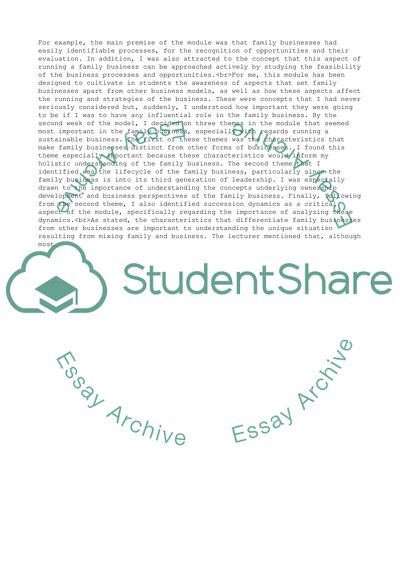Cite this document
(FAMILY BUSINESS- REFLECTIVE ESSAY ON MODULE Example | Topics and Well Written Essays - 2250 words, n.d.)
FAMILY BUSINESS- REFLECTIVE ESSAY ON MODULE Example | Topics and Well Written Essays - 2250 words. https://studentshare.org/business/1831875-family-business-reflective-essay-on-module
FAMILY BUSINESS- REFLECTIVE ESSAY ON MODULE Example | Topics and Well Written Essays - 2250 words. https://studentshare.org/business/1831875-family-business-reflective-essay-on-module
(FAMILY BUSINESS- REFLECTIVE ESSAY ON MODULE Example | Topics and Well Written Essays - 2250 Words)
FAMILY BUSINESS- REFLECTIVE ESSAY ON MODULE Example | Topics and Well Written Essays - 2250 Words. https://studentshare.org/business/1831875-family-business-reflective-essay-on-module.
FAMILY BUSINESS- REFLECTIVE ESSAY ON MODULE Example | Topics and Well Written Essays - 2250 Words. https://studentshare.org/business/1831875-family-business-reflective-essay-on-module.
“FAMILY BUSINESS- REFLECTIVE ESSAY ON MODULE Example | Topics and Well Written Essays - 2250 Words”. https://studentshare.org/business/1831875-family-business-reflective-essay-on-module.


